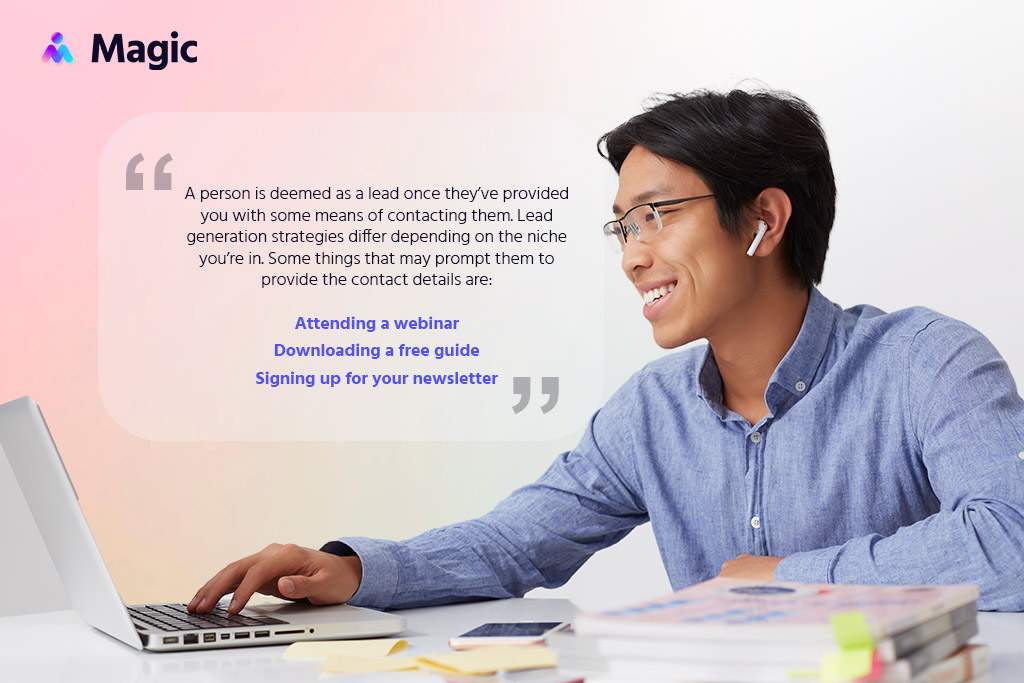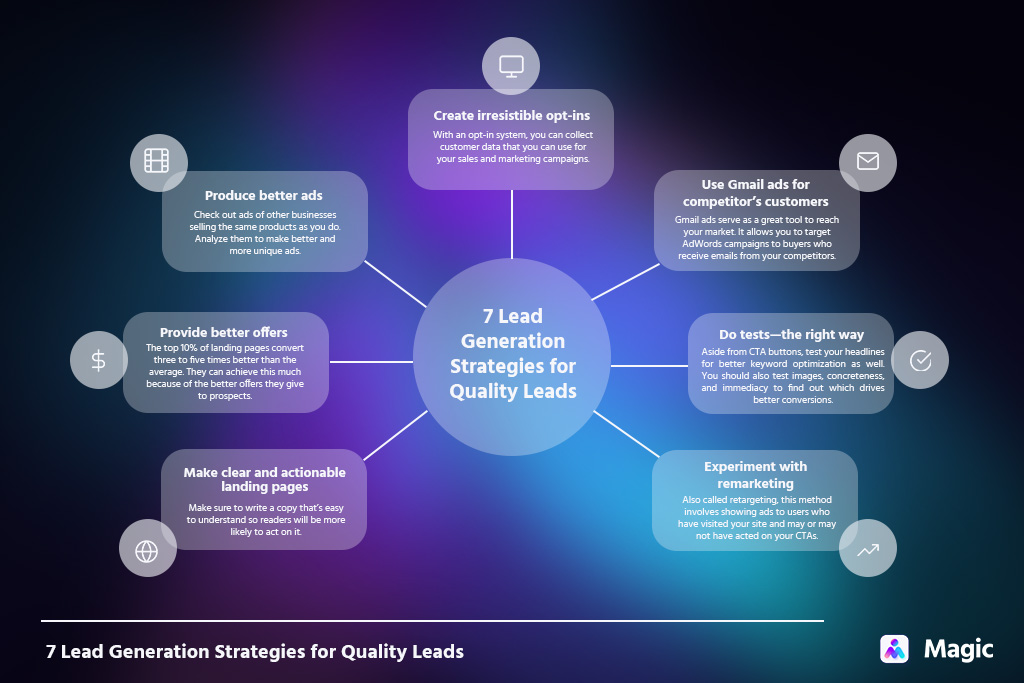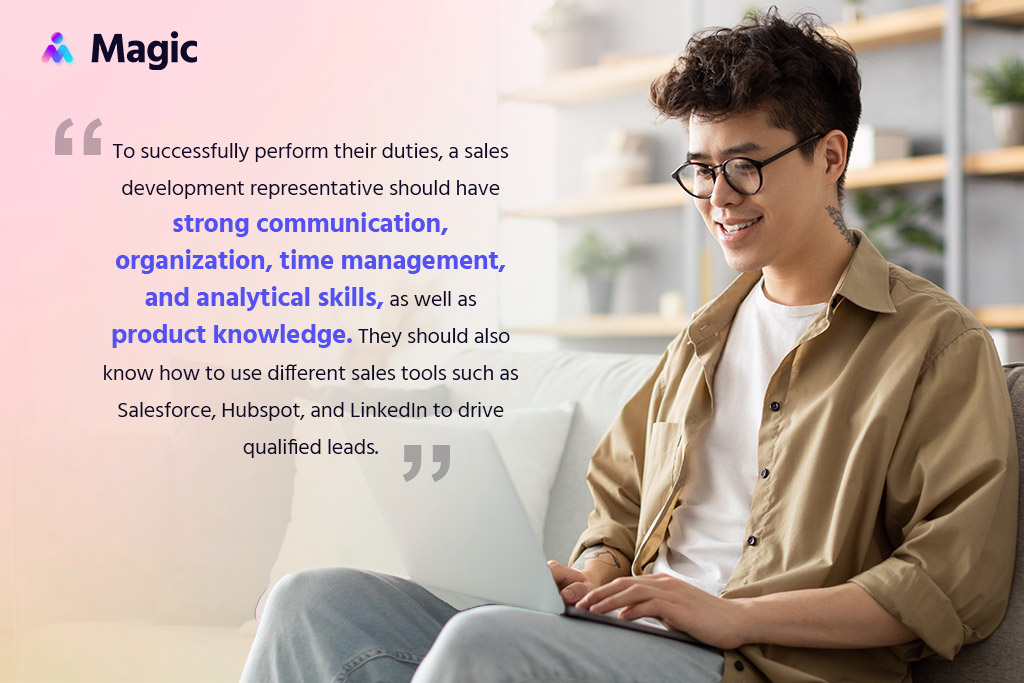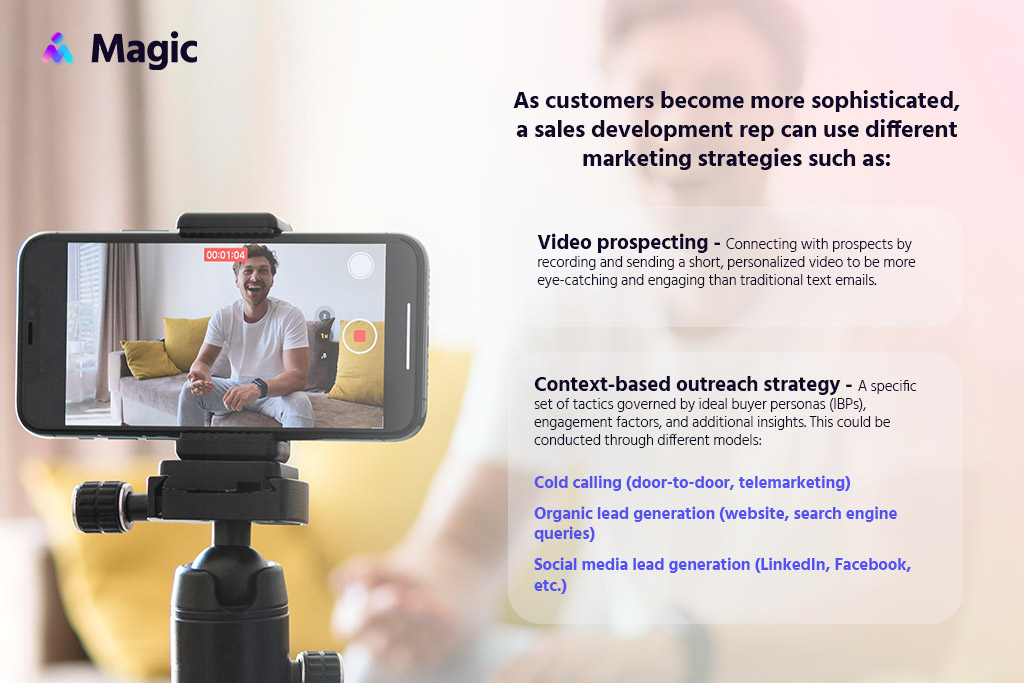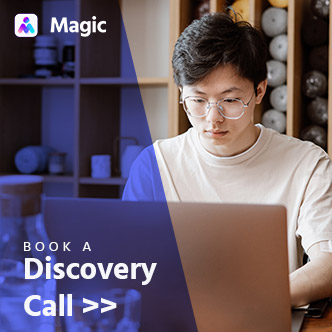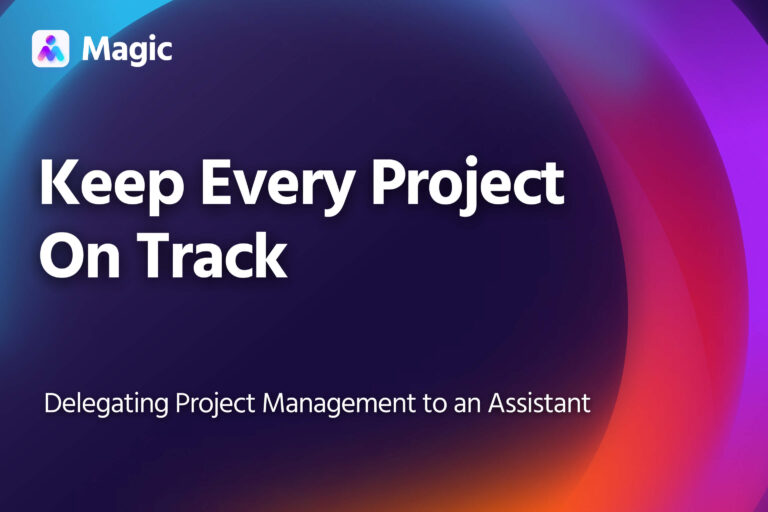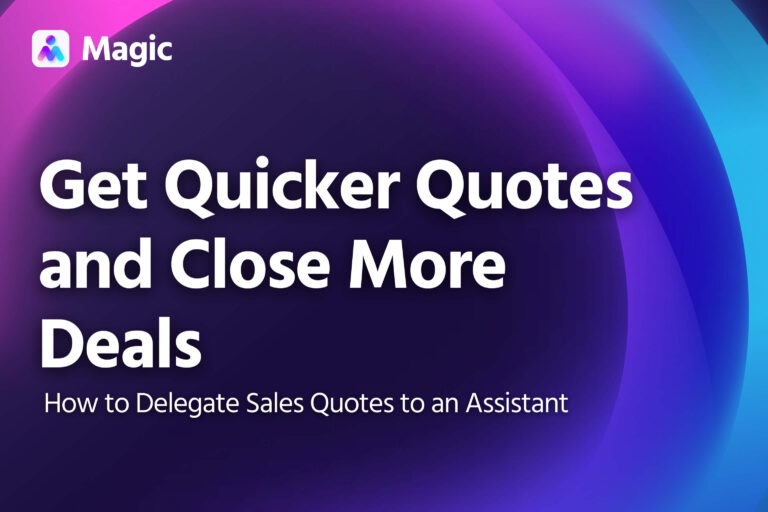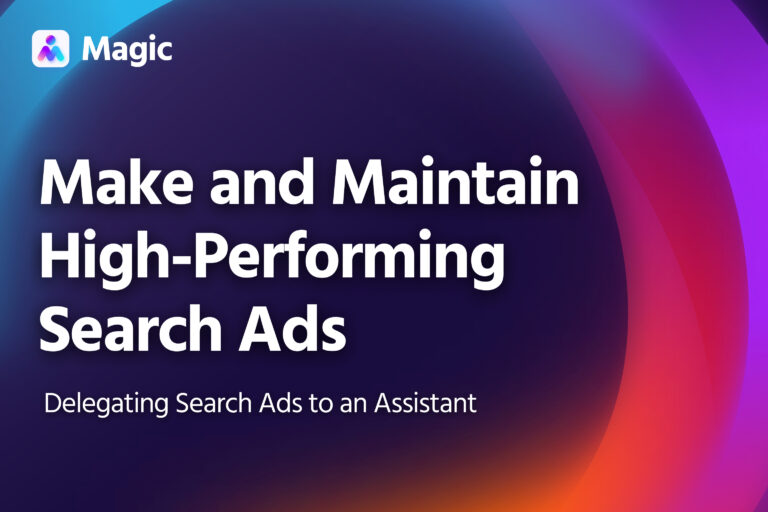Startups focus on growth that in their early years, business owners take part in the sales process. As they scale up the transition from founder to rep selling can falter creating a cluttered pipeline with unrealistic expectations that may lead to revenue loss.
Fine-tune your sales funnel with business lead generation services. Hiring a sales assistant will save you time and money in the long run. They will attract quality prospects, nurture the relationships, and convert them into sales using the best practices and tools in sales.
What is Lead Generation?
Lead generation is the process of getting buyer interest for your business. Prospects are moved through a sales pipeline step by step with the end goal of getting them to buy your product.
A person is deemed as a lead once they’ve provided you with some means of contacting them. Lead generation strategies differ depending on the niche you’re in. Some things that may prompt them to provide the contact details are:
- Attending a webinar
- Downloading a free guide
- Signing up for your newsletter
Other lead gen tactics include:
- Coupons
- Blogging
- Networking
- Social media marketing
- Website landing pages
By outsourcing business lead generation services, you can target the right people to boost your brand awareness and brand loyalty. Attending to your target audience can also provide useful information to tailor your business to their needs.
7 Lead Generation Strategies for Quality Leads
There are many ways to attract quality prospects but not all will be fruitful for your business. You need to factor in your income, resources, goals, and competitive landscape. Business lead generation services can help evaluate and adjust campaigns that will work best.
Here are seven lead-generation strategies that you can use to drive leads:
1. Create irresistible opt-ins
Opt-in sales leads are people who are curious about your business and hope to find out more about it. To do so, they take a specific action such as signing up for your email list.
With an opt-in system, you can collect customer data that you can use for your sales and marketing campaigns. Make your opt-ins attractive to your target audience. Leave the choice to them, but make it hard to ignore (e.g. putting it in a pop-up or a sidebar).
You can also turn your blog posts into opt-in pages. Offer worksheets, resource guides, templates, and PDF blog posts then prompt them to sign up for further updates. Live events, demos, and webinars are prime opt-in options as well.
2. Produce better ads
With so many ads posted on various platforms, you have to make sure that your ads stand out. Make them memorable by crafting a unique message or adding custom videos. You can use striking visuals to hold their attention as well.
Check out ads of other businesses selling the same products as you. Analyze them to make better and more unique ads. You should also aim to boost your quality score and lower the cost per click.
3. Provide better offers
The top 10% of landing pages convert three to five times better than the average. They can achieve this much because of the better offers they give to prospects. You’ll want to reach the top 10% to get about an 11.45% conversion rate.
To reach the top 10%, you need to build your authority and ranking with ads and website optimizations. That said, conversions lower than 2% should spur you to rethink your technique.
4. Make clear and actionable landing pages
A 3-minute long video or one-page copy is more than enough to describe your product. Since it only gives crucial details, it won’t take up too much time and will encourage readers to finish reading the entire thing.
Each landing page should clearly tell the reader what you want them to do whether it’s to sign up for an email list or book a call. Make sure to write a copy that’s easy to understand so readers will be more likely to act on it.
5. Use Gmail ads for competitor’s customers
Gmail ads serve as a great tool to reach your market. It allows you to target AdWords campaigns to buyers who receive emails from your competitors. They can also be interested in your product.
One way to do this is to hit keywords that your competitors are also targeting. Sign up on competitors’ email lists and note words or phrases that they use frequently. These can serve as target keywords for your ads.
You can also target the domains of your competitors. This way, you’ll be where your competitors’ customers frequent.
6. Do tests—the right way
Getting advice on how to generate leads is great but it won’t always work for you as well as it did for others.
Test it and make sure to do it the right way. For example, test call-to-action buttons by using “my” and “you.” You may be surprised how a point of view can have that much impact on getting good leads.
Aside from CTA buttons, test your headlines for better keyword optimization as well. You should also test images, concreteness, and immediacy to find out which drives better conversions.
7. Experiment with remarketing
Also called retargeting, this method involves showing ads to users who have visited your site and may or may not have acted on your CTAs. In short, remarketing targets the people who have already shown interest in your business.
This is a second chance at bringing around your prospects to buy your product. With a robust campaign, you can even retain and upsell existing customers.
You can remarket your business on ad platforms such as Google ads, Facebook ads, and Outbrain. Tag site visitors using Google ads to market your business when they check their emails, watch YouTube, or scroll through Facebook.
Remind buyers of your products through content marketing, social media marketing, and other campaigns. You can also retarget to position your company in front of your prospects.
Business Lead Generation Services: How an SDR Can Help Drive Sales
In building your sales team, you should think about hiring a sales development representative (SDR) to help drive sales. You can hire one from the best lead generation companies or freelance websites.
A sales development rep connects with prospects and learns about their wants and needs. They can do so by answering questions or sending resources about your business. Then, they will determine if they are good customer fits so they can schedule the next steps (e.g. demo, strategy call, consultation) with sales reps higher in your company.
Their addition can create 3-10x the number of pipeline deals for the sales team which also increases the close rate of that pipeline through better lead qualification.
What Does a Sales Development Representative Do?
A sales development representative is focused on moving quality leads through the sales pipeline to close deals. Their job comes in two parts:
- Inbound sales lead prospecting – The process of nurturing leads who express interest in the product and have already engaged with the company
- Outbound sales lead prospecting – The process of reaching out to potential customers who haven’t purchased or used a company’s product
Some of the tasks they can do to attract quality prospects include:
- Work closely with the sales team to develop, enforce, and study the lead qualification process
- Build and handle the sales pipeline from cold leads to warm leads
- Create opportunities with new and existing customers
- Develop account intelligence which gauges a prospect’s behavior and activity in the market to pinpoint the crucial moment they are ready to buy
- Attract business leaders and owners in targeted accounts and create a discussion around their needs
- Engage, nurture, and qualify prospects in inbound calling
- Set up calls, meetings, or demos to increase the odds of closing sales
- Get more leads through cold calls, email, and online platforms like LinkedIn
- Work with the marketing team for fast, consistent follow-ups on inbound leads
- Build and organize lead qualification data and activity on CRM software like Salesforce
To successfully perform their duties, a sales development representative should have strong communication, organization, time management, and analytical skills, as well as product knowledge. They should also know how to use different sales tools such as Salesforce, Hubspot, and LinkedIn to drive qualified leads.
When Should You Add a Sales Development Rep to Your Team?
A sales development representative is a vital part of closing more business deals. To understand further their impact on the sales cycle, here are the signs of when your startup needs to hire an SDR:
There’s a build-up in the sales pipeline
Hubspot found that 19% of buyers want to connect with a salesperson during the awareness phase, 60% in the consideration phase, and 20% in the decision phase. With a sales development rep handling the initial stages in the sales cycle, more contacts are made early. This puts you ahead in the market.
An SDR can standardize and manage parts of your sales cycle, like lead generation and qualification. Sales reps can design and analyze these processes to make them repeatable and scalable.
They can also provide insights to the sales and marketing teams regarding prospecting and customer needs to foster learning among them. This allows them to identify the steps buyers take from lead to close.
Sales development also goes hand in hand with digital marketing. This is more apparent in the social media aspect of sales since the sales team is time-crunched and less inclined to be online.
As customers become more sophisticated, a sales development rep can use different marketing strategies, such as:
- Video prospecting – Connecting with prospects by recording and sending a short, personalized video to be more eye-catching and engaging than traditional text emails.
- Context-based outreach strategy – A specific set of tactics governed by ideal buyer personas (IBPs), engagement factors, and additional insights. This could be conducted through different models:
- Cold calling (door-to-door, telemarketing)
- Organic lead generation (website, search engine queries)
- Social media lead generation (LinkedIn, Facebook, etc.)
The ideal customer profile is still vague
In coming up with their ideal customer profile, startups might experiment a bit at the beginning. This often leads to having many customer profiles that require different messaging, demos, or pricing. This makes for an unscalable sales process.
With an SDR focused on lead generation and qualification, they can get a better understanding of prospects. This allows them to better engage and address the needs of your leads and move the right customer fit through the sales pipeline.
They also create value with every contact by aligning the data they have on prospects with the information and resources they can share.
This way, startups can get a clearer picture of their ideal customer profile, which solidifies their messaging and pricing. Thus, the sales team can strategize accordingly on how to sell their product to a certain client.
Quotas are misaligned
Startups focus on scaling up fast. Due to this, their revenue targets might get misaligned with their selling capacity, even with a clear customer profile and pipeline traction. That’s why hiring a sales development representative is vital in making revenue plans more feasible.
Since they have a core task, an SDR has more room to adjust and overcome issues that may arise quickly. With a better process of qualifying leads, they can also organize a proper lead handoff and execution, such as:
- Blind Round Robin Approach – CRM software or even a simple spreadsheet is used to align and assign leads to the next-up salesperson.
- Region-Specific Approach – Leads are assigned to a salesperson according to their sales territories.
This way, the sales team can avoid wasting time pursuing low-value leads that can decrease revenues. They are also faster than advertising since prospects are less likely to ignore a phone call, a custom email, or other lead generation experience.
A sales development rep also has the potential to become a salesperson because they are already established as effective openers, already know your products and processes, and require less training.
Get Business Lead Generation Services with Magic
A sales assistant will help drive sales by handling lead generation and sales development tasks, among others. This way, your team can just focus on closing deals.
Magic works to match startups and SMEs with the right virtual assistants based on growing needs. Boost the quantity and quality of your sales work with a virtual assistant as your sales development representative.
Save time and money in hiring and training by outsourcing business lead generation services from Magic. A Magic Virtual Assistant will help you create better client relationships and overall customer experience. Check out our hiring guide to know how you can get started.
Find out how Magic will help close your biggest deal just like YachtLife. Book a call with us to discuss your business goals and needs!


